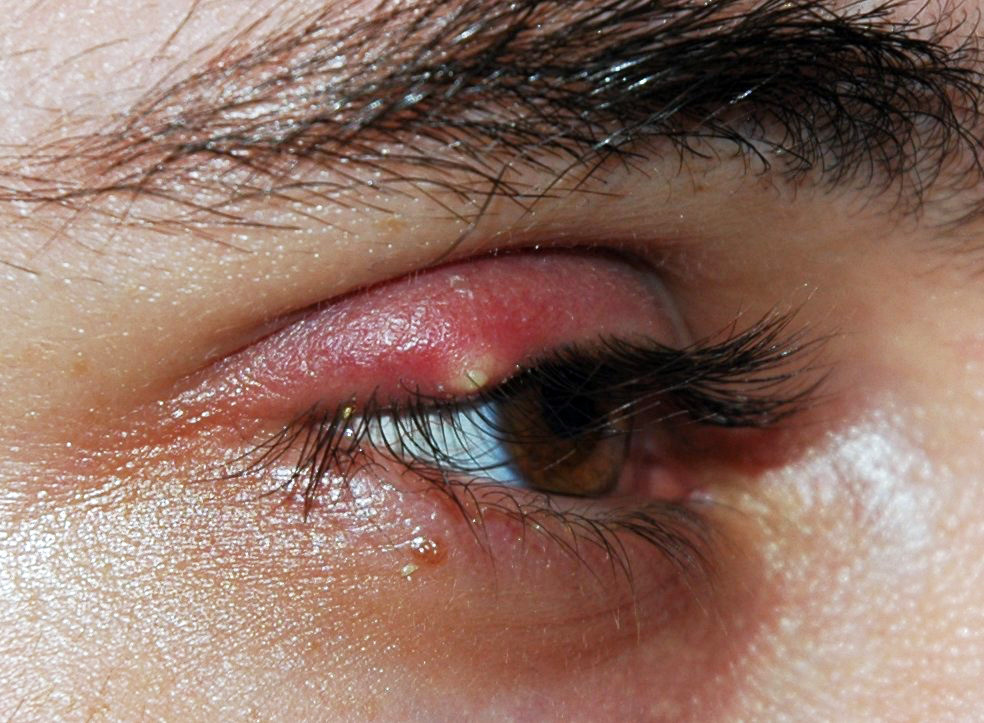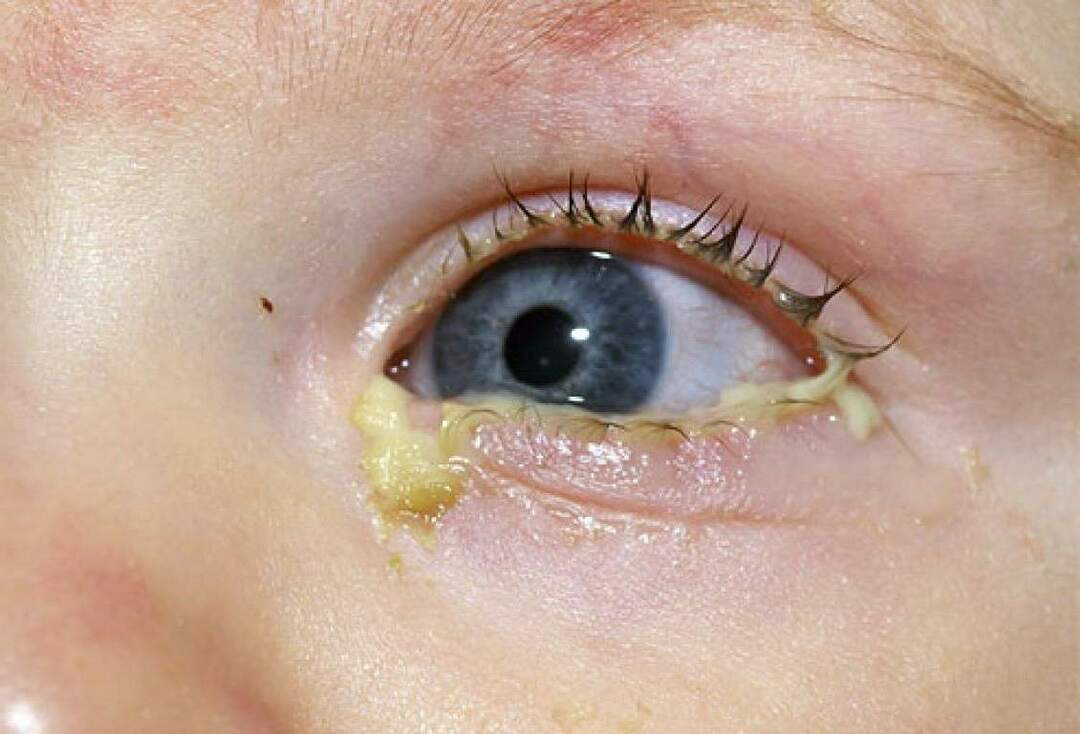The baby has a glazed eye: what should I do?
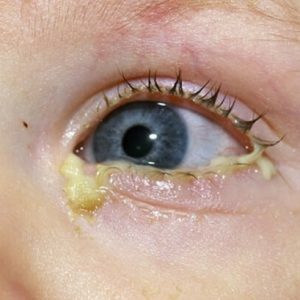 Infants are so vulnerable, their immunity is still very weak, and many organs are not fully formed.At this age, children often have problems with the eyes, in particular, parents can notice the accumulation of pus in the inner corner of the eye.What can signal this symptom and how to fight it?
Infants are so vulnerable, their immunity is still very weak, and many organs are not fully formed.At this age, children often have problems with the eyes, in particular, parents can notice the accumulation of pus in the inner corner of the eye.What can signal this symptom and how to fight it?
Why do the eyes fester in babies
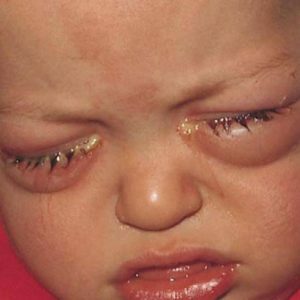
The accumulation of pus in the eyes of children can signal conjunctivitis or dacryocystitis .Conjunctivitis refers to inflammation of the conjunctiva.The disease, in addition to purulent discharge, is also accompanied by reddening of the eyes and edema of the eyelids.In most cases, both eyes are affected.
Dacryocystitis is an inflammation of the lacrimal sac caused by obstruction of the lacrimal passages.Typical signs of dacryocystitis are purulent or mucous discharge from the eyes, which increases with pressure in the area of the lacrimal sac.
Principles of treatment
Treatment of suppuration of the eye in the baby has the following objectives: elimination of symptoms, fight against infection, prevention of the spread of the pathological process and the development of complications.
Medical treatment
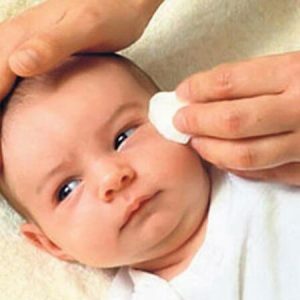 If the baby wakes up with stitched eyelashes, a pus accumulation in the inner corner of the eyelid, you can eliminate these phenomena by rubbing your eyes with antiseptics. For wiping use a solution of penicillin, 0.02% solution of furatsilina, broth chamomile .Manipulate with clean hands.It is necessary to soak the wadded disk in the solution, squeeze it a little, and then hold it through the eyelid from its outer corner to the inner corner.After that, you can dial the same solution into a rubber pear, open your eyelids with your fingers and pour a solution into the eye.The residues on the skin can be wiped with a cotton pad.Wipe and rinse the eyes should be done four to six times a day.
If the baby wakes up with stitched eyelashes, a pus accumulation in the inner corner of the eyelid, you can eliminate these phenomena by rubbing your eyes with antiseptics. For wiping use a solution of penicillin, 0.02% solution of furatsilina, broth chamomile .Manipulate with clean hands.It is necessary to soak the wadded disk in the solution, squeeze it a little, and then hold it through the eyelid from its outer corner to the inner corner.After that, you can dial the same solution into a rubber pear, open your eyelids with your fingers and pour a solution into the eye.The residues on the skin can be wiped with a cotton pad.Wipe and rinse the eyes should be done four to six times a day.
Antibacterial ointments and drops are used to suppress pathogens that cause suppuration. Most often in pediatric ophthalmic practice, antibacterial drops with levomycitin, ofloxacin, tobramycin, 20% albucid and ointment( 1% eye tetracycline and 0.5% erythromycin) are used.
Please note! Drops should be instilled only after preliminary wiping( washing) of the eye with antiseptics, as described above.
How to lay ointment and drip drops in the eye?
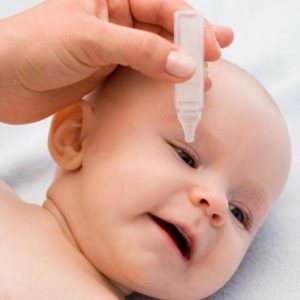 The first eye procedures for parents can cause special difficulties.Since the kids are constantly moving, it is necessary to fix the head.Then, with clean fingers, the mother expands the eye gap of the child, spreading her eyelids.For the lower eyelid drop one or two drops of the drug.After that it is necessary to remove the fingers and the eyelids of the baby will close.Through the lower eyelids, you can gently massage the eye so that the medicine is distributed along the conjunctiva.Drops must be digested six to eight times a day.
The first eye procedures for parents can cause special difficulties.Since the kids are constantly moving, it is necessary to fix the head.Then, with clean fingers, the mother expands the eye gap of the child, spreading her eyelids.For the lower eyelid drop one or two drops of the drug.After that it is necessary to remove the fingers and the eyelids of the baby will close.Through the lower eyelids, you can gently massage the eye so that the medicine is distributed along the conjunctiva.Drops must be digested six to eight times a day.
For laying ophthalmic ointment it is necessary to pull the lower eyelid and squeeze out a little ointment for it.In the instructions to the drugs are recommended to lay the ointment two or three times a day.If the parents during the day treat suppurative eyes of the baby with drops, it means that the ointment is enough to lay only for the night.
Massage of the lacrimal sac with dacryocystitis
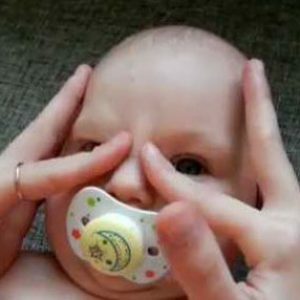 When the glazika is suppurated against the background of dacryocystitis, the same drug treatment is performed as with conjunctivitis.Then, after cleansing the eye, antiseptics proceed to massage the lacrimal sac.The most effective is the procedure at the age of the baby to two to three months.The purpose of the massage is to create pressure drops in the teardrop system due to jerky movements, which will lead to the removal of the gelatinous plug or the rupture of the film overlapping the tear duct.
When the glazika is suppurated against the background of dacryocystitis, the same drug treatment is performed as with conjunctivitis.Then, after cleansing the eye, antiseptics proceed to massage the lacrimal sac.The most effective is the procedure at the age of the baby to two to three months.The purpose of the massage is to create pressure drops in the teardrop system due to jerky movements, which will lead to the removal of the gelatinous plug or the rupture of the film overlapping the tear duct.
Massage parents can do themselves.For this, first of all, you need to wash your hands.With an index finger, the mother gropes in the inner corner of the eye the tubercle, the finger needs to be raised slightly above it.In this area, a finger is made with five to ten pushing movements from top to bottom in a vertical direction.When pressing, soft tissue together with the lacrimal sac must touch the bones of the nose.
If there is pus from the eye during the massage - it is necessary to wipe it with fleece.At the end of manipulation, antibacterial drops should be dripped.
Important ! It is not recommended to make circular movements, this will lead to rubbing of pus in the walls of the bag, which can provoke its rupture.Moreover, it is not necessary to forcibly squeeze out pus from the lacrimal sac.
Massage should be done five to six times a day, it is better to do it before feeding. If after one or two weeks after the beginning of the massage the dacryocystitis does not disappear, it means that the child needs to sound the lacrimal passages and then wash them.
Probing of the lacrimal ducts in dacryocystitis
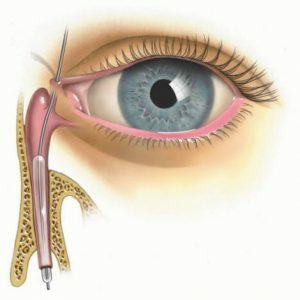 If, despite the conservative treatment, the tear ducts remain sealed - the ophthalmologist probes the canal.For this purpose, the doctor is probing with a tear duct, followed by a lacrimal sac and a tear duct.Complete the procedure for probing by washing the tear ducts with a solution of furacilin, piclosidine.If the patency of the paths is restored, it means that the liquid will flow into the nasopharynx during washing.This procedure takes little time and in most cases is tolerated by small patients well.After probing the baby is prescribed a course of antibiotic therapy.
If, despite the conservative treatment, the tear ducts remain sealed - the ophthalmologist probes the canal.For this purpose, the doctor is probing with a tear duct, followed by a lacrimal sac and a tear duct.Complete the procedure for probing by washing the tear ducts with a solution of furacilin, piclosidine.If the patency of the paths is restored, it means that the liquid will flow into the nasopharynx during washing.This procedure takes little time and in most cases is tolerated by small patients well.After probing the baby is prescribed a course of antibiotic therapy.
Usually, a toddler of a month-two-month-old age recovers after one sensing of the lachrymal paths with rinsing.Babies at the age of two to three months often require probing with several washes( with an interval of ten days). With delayed treatment to an ophthalmologist( the age of the baby is more than four to six months), treatment of dacryocystitis may be prolonged with repeated probing and washing of the lacrimal passages.
Thus, the accumulation of pus in front of the baby can be a symptom of a serious illness.And on how timely the parents turn to the pediatrician, the outcome of the disease will depend.
Grigorova Valeria, medical reviewer

